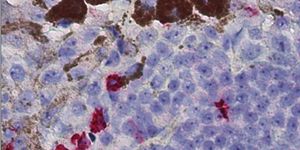The brain relies on the stabilizing mechanism called "homeostasis" to compensate for erratic shifts and spikes in its neuronal communications. Homeostasis is the ability to maintain relatively stable equilibrium between different elements of the brain's composition to preserve overall network function. When there are disruptions in stability, the result could be disorders such as epilepsy, but very little is known about this macro-level regulatory mechanism.
Dr. Inna Slutsky of Tel Aviv University's Sackler Faculty of Medicine and TAU's Sagol School of Neuroscience has published a new study published in eLife. She posits that homeostatic regulation occurs mainly in groups of neurons, rather than in the individual neurons. Instead of the established assumptions, Edden Slomowitz and Boaz Styr, doctoral students in Dr. Slutsky's laboratory, discovered that single brain cells, on an individual basis, could not stabilize "spikes" in neuron communication over long periods on their own. "Spikes" or "firing," as they are also known, are neurons' response to stimulation. When they occur, they relay messages to the rest of the body.

According to Dr. Slutsky, "Neurological and psychiatric disorders often see similar or overlapping neurological symptoms, and the failure of the neuronal homeostatic system may lead to these common endpoints. Understanding the principles and mechanisms involved in neuronal homeostasis may lead to new approaches in the treatment of these and other brain disorders like Alzheimer's disease."
While the brain's ability to adapt to a constantly changing environment and to form and store memories is due to the extreme flexibility, or plasticity, of its neural network, the extreme plasticity of the brain also makes it inherently prone to instability and subsequent illnesses and disorders. How can this be overcome?
According to Slomowitz, "Through homeostasis, organisms are able to maintain a stable internal environment. One common example is the secretion of insulin in response to a meal to keep blood sugar levels within the normal range. While there was evidence to support the theory that there were homeostatic mechanisms at work in the brain to stabilize neuronal activity, it was unclear which precise properties were regulated."
In order to perform the study, Slomowitz grew a neural network on an array of electrodes and recorded the activity of single individual neurons in the network. Then he applied a drug that severely inhibited neural activity. In collaboration with Prof. Eli Nelken of Hebrew University and Dr. Michael Slutsky of Mantis Vision, Slomowitz discovered that the network returned to its original firing rate over the course of two days in spite of the continued presence of the drug, even though the firing rates and patterns of individual neurons did not reflect homeostatis.
"These results were unexpected and contradicted the current dogma in the field stating that individual neurons can regulate their own firing rates in an autonomous manner," said Dr. Slutsky.
Styr repeated the experiment in the lab using calcium imaging in order to monitor the activity of visually identifiable neurons. The calcium images revealed similar results, leading to the conclusion that homeostasis occurs at the level of neuron populations, not on a cell-by-cell basis.
The researchers also examined the propensity of the network to differentiate between low- and high-frequency spikes, a capability necessary for short-term memory. They determined that this detection was severely disrupted two days after the introduction of the drug, even though network firing rates and patterns had been homeostatically restored.
"Our study demonstrates that neurons in a neural network act synergistically in order to keep the population spiking rates and patterns in a constant physiological range," Dr. Slutsky concluded. "This may occur at the cost of a diminished ability to form new memories, a process which may underlie the loss of short-term memory observed in brain diseases such as Alzheimer's disease. This understanding may bring us one step closer to the understanding of the processes that precede cognitive decline in neurodegenerative disorders."









